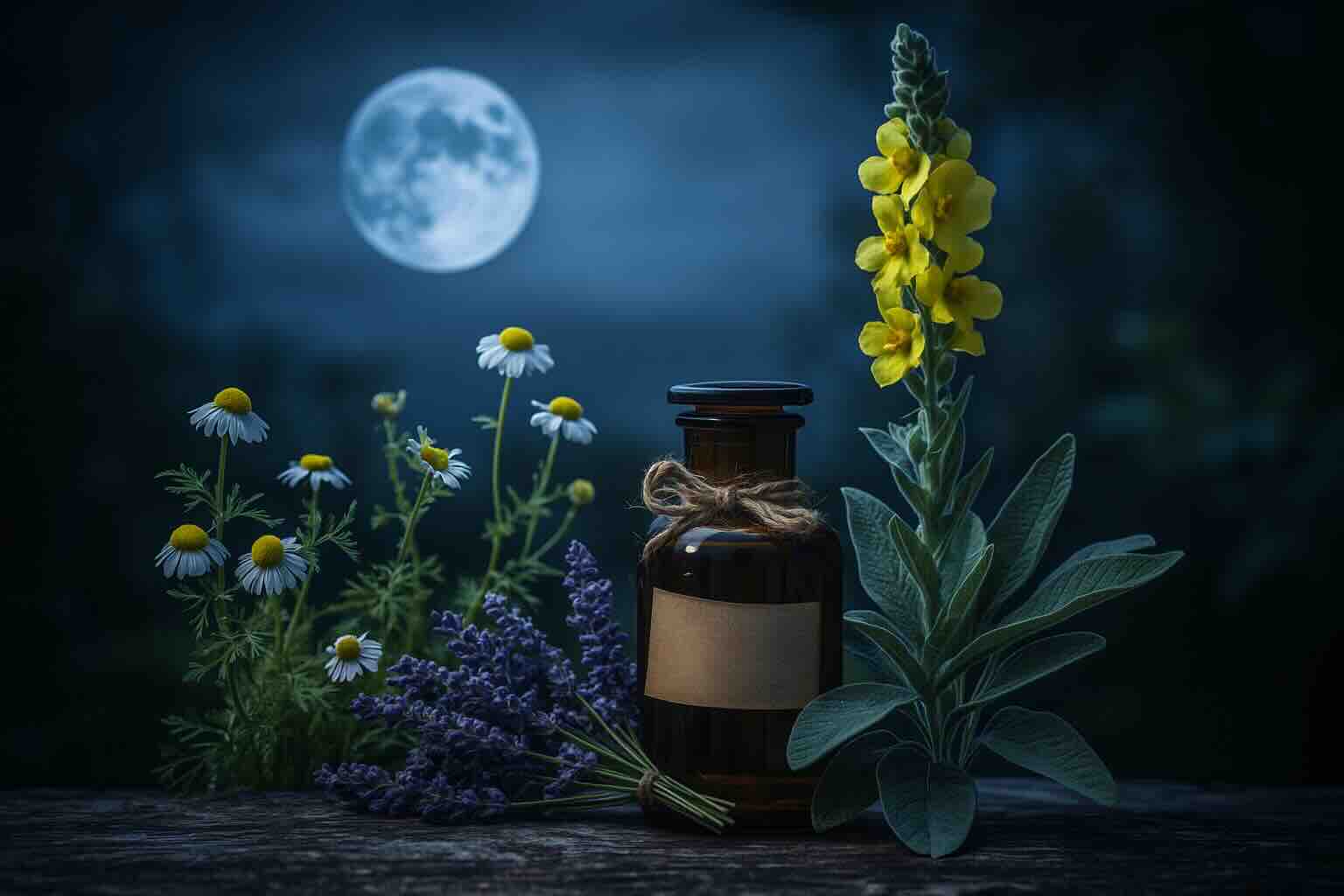For centuries, healers and gardeners have looked to the sky to guide their hands on earth. Among the most enduring traditions is moon gardening, the belief that lunar cycles influence the growth and potency of plants. When it comes to medicinal herbs, timing is everything. Following the moon’s rhythm can shape not only how plants grow but also the strength of their healing properties.
Why the Moon Matters in Herbal Medicine
The moon’s pull shapes ocean tides, influences animal behavior, and marks the rhythm of human life. Herbalists have long believed that the same energy touches plants, especially those used for healing. The amount of sap, essential oils, and active compounds within a plant is thought to rise and fall with the moon’s light and gravitational pull.
While modern science remains cautious about direct lunar effects, traditional knowledge suggests that herbs harvested during specific moon phases hold greater potency. This idea has persisted through cultures worldwide, from European folk medicine to Chinese and Ayurvedic traditions.
Waxing Moon: Energy for Growth
As the moon grows from new to full, it symbolizes expansion and vitality. During this phase, energy is believed to rise into the aerial parts of plants—the leaves, stems, and flowers. Medicinal plants that rely on these parts, such as chamomile, lavender, and peppermint, are best planted and harvested under a waxing moon.
When you collect herbs for teas or tinctures during this time, you may notice their aroma is stronger and their oils more concentrated. Gardeners also use the waxing moon to plant fast-growing herbs that need quick establishment, like basil or calendula.
Full Moon: Peak Power and Harvest
The full moon has always been seen as a time of abundance and heightened energy. In herbal gardening, it represents the peak of plant vitality. Harvesting during the full moon is thought to yield the most potent medicinal plants, especially those used for their flowers and fruits.
St. John’s Wort, echinacea, and elderberries harvested during a full moon are said to carry stronger healing energy. Some herbalists even prepare remedies—like tinctures and infused oils—on full moon nights, believing the lunar light blesses their medicine with extra strength.
Waning Moon: Root Strength and Grounding
As the moon moves from full back to new, energy is believed to return underground, feeding roots and stabilizing plants. This waning phase is the perfect time to harvest root-based medicinal plants such as valerian, ginger, and dandelion.
Roots collected during a waning moon are said to be denser, more resilient, and richer in active compounds. Gardeners also use this phase to transplant perennials, as lower sap flow helps reduce transplant shock. It’s a grounding time in the herbal calendar, ideal for focusing on long-term resilience rather than quick growth.
New Moon: Rest, Reflection, and Soil Care
The new moon is a time of stillness, with no visible light in the sky. For herbalists, this is a period of rest and preparation. It’s not the best moment for planting or harvesting, but rather for tending the soil, making compost, or planning future plantings.
Many herbal traditions also see the new moon as a time for ritual cleansing. Herbal teas, baths, and smudging prepared during this phase often focus on detox and renewal. In gardening, enriching the soil during a new moon lays a fertile foundation for the waxing phase to come.
Scientific Views on Lunar Herbalism
Modern science hasn’t fully proven that moon phases directly change plant chemistry, but it does support the idea that plants are sensitive to subtle environmental cues—light cycles, gravity, and moisture. The moon could play an indirect role by influencing these factors.
Even if the effect is partly psychological, aligning with lunar cycles makes gardeners more mindful. By harvesting herbs at intentional times, they often observe more closely, handle plants with greater care, and build a deeper relationship with their gardens. These practices naturally improve the quality of herbal medicine.
Medicinal Plants and the Moon in 2025
The year 2025 offers unique lunar events, including multiple supermoons and eclipses. Many herbalists see these as powerful times for planting, harvesting, or preparing remedies. A supermoon harvest, for example, is considered especially potent, with herbs infused under brighter lunar light carrying symbolic strength.
Imagine collecting lavender blossoms under a glowing supermoon and drying them for calming tea. Or harvesting valerian roots during a waning eclipse and preparing tinctures for sleep and relaxation. These practices connect modern gardeners to ancient traditions, blending science with ritual.
Blending Tradition with Modern Herbalism
Lunar gardening does not replace scientific knowledge of plant chemistry, but it adds an extra dimension. Calendula’s anti-inflammatory compounds and peppermint’s menthol don’t depend on the moon, but harvesting them at intentional times can make the process feel sacred and purposeful.
By aligning herbal gardening with moon phases, you create a rhythm that blends healing plants with the natural cycles of the sky. It’s a practice that supports not just the body but also the spirit, reminding us that medicine begins with connection to nature.
Final Thoughts: Healing Under Moonlight
Whether you believe in the moon’s direct influence or see it as symbolic, lunar gardening for medicinal plants offers a deeper way to interact with your herbs. From chamomile to valerian, each plant has its lunar moment. In 2025, try harvesting with the moon’s rhythm and notice the difference—not only in your remedies but also in your relationship with the garden.
The moon invites us to slow down, observe, and heal in harmony with nature. In your herb garden, its glow is not just a light in the sky, but a guide for timeless wisdom.
